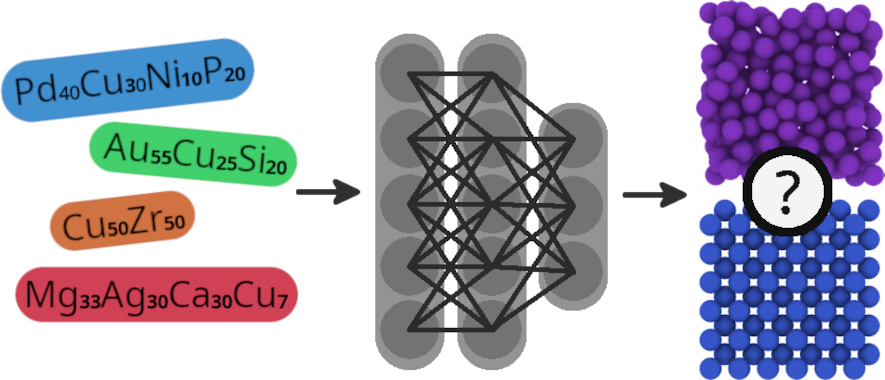Metallic glasses (MGs), created by quenching of molten alloys, lack crystalline order. Their distinctive property combinations lead to diverse potential applications, from golf clubs to transformer cores. Glass formation in metallic systems is, however, poorly understood, greatly restricting the development of novel alloys. Many empirical rules and criteria aiming to describe the glass-forming ability (GFA) of alloy compositions have emerged since MGs were first discovered in 1959, but they have limited predictive power and do little to advance fundamental understanding. We apply the ‘fourth paradigm’ of scientific research by training a machine-learning model of GFA on a large dataset of experimental measurements, not merely to produce a predictive tool, but also to extract theoretical insights. While recovering several established empirical criteria, our analysis further identifies an important relation between GFA and the electronic structures of the elements in an alloy. Novel alloy compositions with high GFA (and also crystalline high-entropy alloys) may be systematically designed by selecting elements to induce mutual changes in atomic radii.
Figure: Alloy candidates are supplied to a neural-network model that predicts glass-forming ability. We probe the inner workings of the neural network, to identify the properties that are key to decision making.
R. M. Forrest and A. L. Greer, "Machine-learning improves understanding of glass formation in metallic systems", Digit. Discov., 2022

